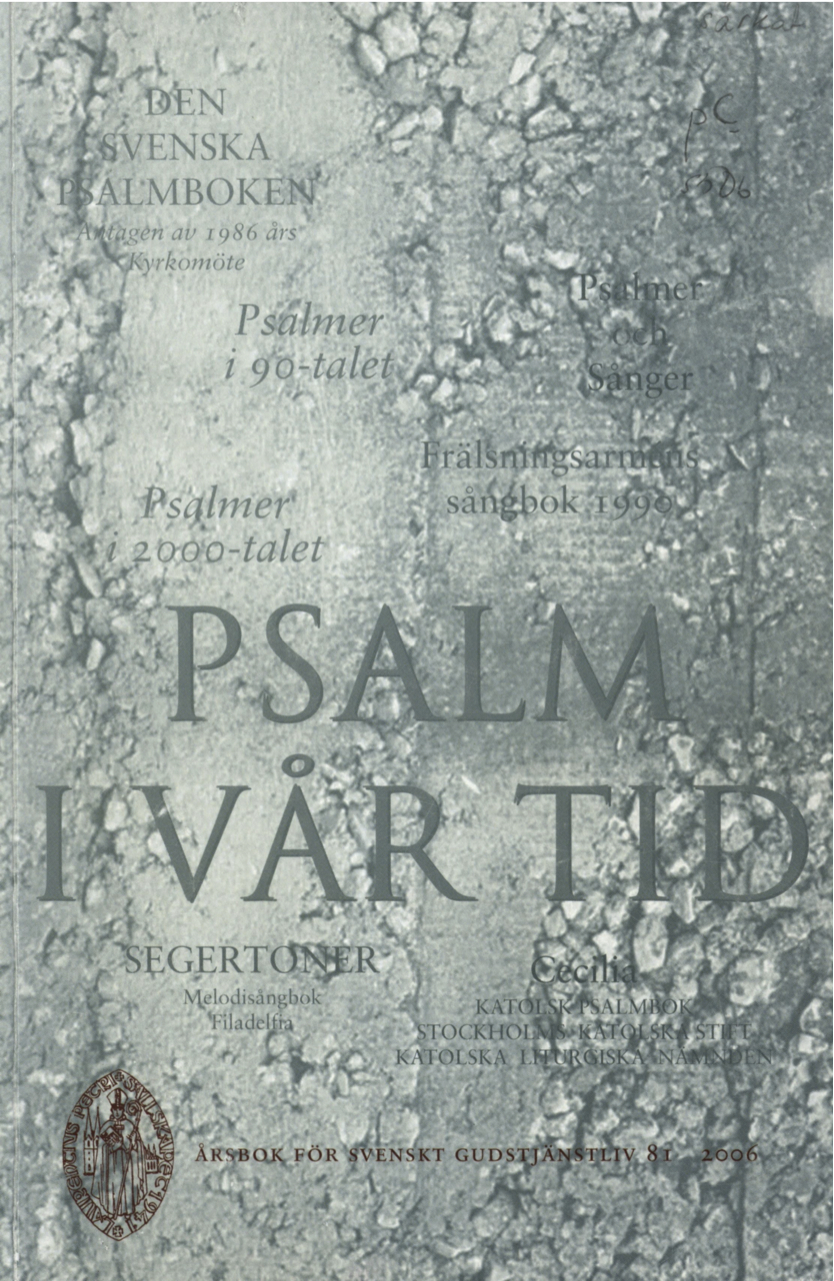Guds formgivare. Om Anders Frostenson och Olov Hartman som psalmförfattare
Abstract
Anders Frostenson and Olov Hartman, two of the most important, not to say dominant Swedish hymnwriters of the late 20'th century, were both born 1906 and would this year have celebrated their 100'th anniversary. Frostenson was born and raised in a farmers family, while Hartman grew up in a family where the parents were officers in the Salvation Army.
This article deals with them and their writing from three perspectives.
Studied from a biographical point of view you can see traces of a sense of alienation, from different religious experiences and from existential traumatic events colouring their hymns, especially in Frostenson's writing.
The challenge of, and intention with hymnwriting is the second perspective. Frostenson wrote his first hymn, which is today almost regarded as a classic one, »Jesus från Nasaret går här fram» already in 1935. He continued writing hymns almost all his life. Hartman entered the scene much later in life. Frostenson inner challenge was evident and he became, not least through the Institute of Hymnology which he founded in 1961, a strong and important resource in the long process that 1986 resulted in a new hymnal for the Church of Sweden. The personal, the biblical and the dogmatic elements are said to be the three pillars carrying his authorship.
As an author Hartman was considerably broader than Frostenson with novels and dramas on his agenda. Involved also in the liturgical renewal of the Church of Sweden, hymns became an important part of his contribution to the liturgical field. The Theologia crucis was his theological prefix with a special stress to the kenosis- perspective, notable not least in his hymn »För att du inte tog det gudomliga dig till en krona».
Thirdly, Frostenson was a typical poet writing of inspiration, while Hartman was the systematic worker. Frostensons texts are often short, simple, straight and naked, a kind of a modern anibrosian hymn. Hartman, on the contrary, chooses complication. His texts are tight, woven of skilfully used biblical and psychological elements, an intricate pattern of associations and a rich variety of new metaphors. What unites these both hymnwriters is the authenticity, their hymns flowing out from living hearts, »begotten, not made».
Downloads
Publicerad
Nummer
Sektion
Licens
© författarna, Laurentius Petri Sällskapet för svenskt gudstjänstliv samt Artos & Norma bokförlag. Det är tillåtet att kopiera och använda material ur Svenskt Gudstjänstliv för forskningsändamål om källan anges. För övriga ändamål kontakta respektive artikelförfattare samt förlaget. Särskilda restriktioner kan gälla för bildmaterial.


